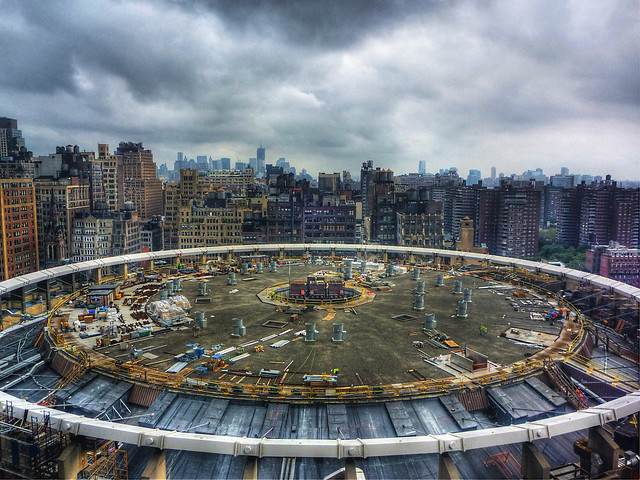
These proposed entrances for the Second Ave. Subway on 86th St. are again the subject of another federal lawsuit.
A little over two years ago, a group of Upper East Siders who live in the Yorkshire Towers building filed suit against the MTA over the location of the planned entrances for the Second Ave. Subway’s 86th St. subway station. The suit was eventually dismissed on the grounds that the statute of limitations had run out, but that has not deterred these residents. Last week — for the third time — the same building filed essentially the same lawsuit, and with a little over three years of construction remaining on the project, the suit is yet another obstacle.
At issue are two station entrances where one had been originally planned. At first, the Second Ave. Subway’s 86th St. station was to be at the northeast corner, but MTA engineers determined that the building that would have hosted the station could not do so safely. So the MTA proposed two entrances on 86th St. surrounding Yorkshire Towers’ driveway. The MTA produced a Supplemental Environmental Assessment that showed how relocating the entrances would have no adverse impact on the neighborhood, and the residents threw a fit.
Putting forward a bunch of safety arguments I believed were bogus two years ago, Yorkshire Towers claimed the two entrances would create safety hazards due to the driveway. It reeked of classic NIMBYism. Here is a building on the tony Upper East Side with a mid-block, U-shaped driveway arguing that two subway entrances — both of which point away from the active driveway — would be more dangerous than not. If they are that concerned with pedestrian safety, maybe we should just shutter their driveway entirely.

The staircases at Entrance 2 have been designed to minimize passenger flow in front Yorkshire Towers by siphoning riders away from the active driveway.
But that’s neither here nor there. How, you may be wondering, can the same plaintiff be filing the same suit requesting the same relief as they did two years ago when their suit was dismissed? If you’re tempted to say they can’t, well, you wouldn’t be wrong, but with the right lawyers and today’s pleadings standards, anything is possible. This time around, the complaint clocks in at 70 pages — lengthy and dull but shorter than the one from two years ago. It has few real answers.
Essentially, the building’s argument rests on the fact that at a few meetings the plaintiffs requested, the MTA wasn’t accepting of the Yorkshire Towers’ own engineering assessments. MTA Capital Construction officials dismissed their findings outright, and now it appears as though Yorkshire Towers is again claiming that the MTA’s own assessments were faulty while trying to reset the statute of limitations from the time of the building’s last meetings with the MTA. It’s a rather nifty legal sleight of hand, but it shouldn’t lead to a different outcome.
The biggest issue now — as it was two years ago — is that the MTA’s actions weren’t outside the bounds of the agency’s authority. When it decided to move the entrances, the agency performed the studies required of it by federal law. It filed the findings according to proper procedure and were granted the ability to change the design. Just because some people don’t like the conclusion doesn’t mean it’s wrong as a matter of law.
And so we’ll go through this again. The MTA’s answer to the complaint is due soon, and the agency is sure to deny the claims. Maybe the judge will dismiss, but if this case survives, the looming construction work may have to be delayed or revised. At that point, everyone in the city will pay the price, and not just some folks concerned with their mid-block driveway.
After the jump, read the complaint.



















